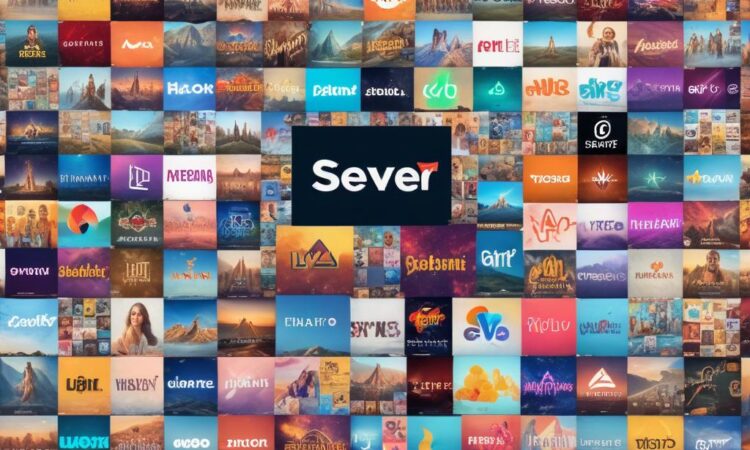The Future of Streaming Services: A Landscape in Flux
The rise of streaming services like Netflix, Disney+, and HBO Max has irrevocably altered the entertainment landscape. This surge in digital platforms has ushered in a new era of film distribution, content production, and audience consumption, leaving traditional models in its wake. The industry is now grappling with the evolving dynamics of this digital revolution, raising crucial questions about the future of streaming services and their impact on the broader entertainment ecosystem.
The Rise of Streaming: A Paradigm Shift
The advent of streaming services has fundamentally transformed how movies and television shows are consumed. Gone are the days of waiting for scheduled broadcasts or venturing out to physical theaters. Streaming platforms have empowered audiences with unprecedented control over their viewing experience, offering on-demand access to a vast library of content at their fingertips. This shift has resulted in a dramatic decline in traditional cable television subscriptions and a surge in streaming subscriptions.
The convenience and affordability of streaming services have proven irresistible to a vast segment of the population. Subscribers appreciate the ability to binge-watch their favorite shows at their own pace, pause and resume viewing at will, and access content across multiple devices. This shift has been particularly pronounced among younger generations who have grown accustomed to on-demand digital experiences.
The Battle for Content: A Fiercely Competitive Landscape
The success of streaming services hinges on their ability to secure exclusive and captivating content. In this fiercely competitive landscape, platforms are investing heavily in original programming, acquiring existing libraries, and exploring innovative ways to differentiate themselves. This has led to a proliferation of high-quality original series and films, raising the bar for production values and storytelling.
The battle for content has also fueled a surge in mergers and acquisitions within the industry. As streaming services seek to expand their offerings and reach a wider audience, they are acquiring studios, networks, and production companies. This consolidation of power has created a more concentrated landscape with a few major players vying for dominance.
The Impact on Traditional Media: A Changing of the Guard
The rise of streaming services has had a profound impact on traditional media industries. The decline in cable television subscriptions has forced networks to adapt their strategies, investing in streaming platforms and developing original content to attract and retain viewers. Theatrical film distribution has also been disrupted, with studios increasingly releasing movies simultaneously in theaters and on streaming platforms. This shift has raised concerns about the future of traditional cinemas and the economics of film production.
The Future of Streaming: Trends and Predictions
The streaming landscape continues to evolve at a rapid pace. Several key trends will shape the future of the industry:
1. Increased Competition:
The streaming market is expected to become even more competitive, with new players entering the field and existing platforms expanding their reach. This intense competition will likely lead to a focus on providing more personalized experiences, offering a wider range of content, and developing innovative features to attract and retain subscribers.
2. The Rise of Live Streaming:
Live streaming is gaining increasing popularity, with platforms like Twitch, YouTube Live, and Facebook Live offering a real-time connection between creators and audiences. Streaming services are increasingly incorporating live content into their platforms, from sports events to music performances to live news broadcasts.
3. The Importance of Data:
Data analytics will play an even more critical role in the success of streaming services. Platforms are using data to understand user preferences, personalize recommendations, and optimize content production. This focus on data-driven decision-making will shape the future of content creation and distribution.
4. The Rise of Subscription Bundles:
As the number of streaming services proliferates, consumers are increasingly seeking subscription bundles that offer access to multiple platforms at a discounted rate. This trend will likely continue, as consumers look for more affordable ways to access a wide range of content.
Challenges and Opportunities: Navigating the Future
The future of streaming services presents both challenges and opportunities for the industry. Platforms will need to navigate a complex regulatory landscape, address concerns about privacy and data security, and continue to innovate to stay ahead of the competition.
Challenges:
- Rising Content Costs: The fierce competition for exclusive content is driving up production costs, forcing platforms to invest heavily in original programming.
- Subscriber Churn: As consumers have access to a plethora of streaming options, churn rates are becoming a significant concern for platforms.
- Regulation and Privacy: Governments around the world are increasingly regulating streaming services, raising questions about content moderation, privacy, and data security.
- The Piracy Problem: Piracy remains a persistent threat to the streaming industry, as viewers seek access to content without paying for subscriptions.
Opportunities:
- Global Expansion: Streaming services have the potential to reach a global audience, transcending geographical boundaries and cultural differences.
- Innovation in Content: Streaming platforms have the flexibility to experiment with new formats, genres, and storytelling approaches, pushing the boundaries of entertainment.
- Personalized Experiences: Streaming services can leverage data analytics to create highly personalized experiences, tailoring content recommendations and user interfaces to individual preferences.
- New Revenue Streams: Streaming platforms are exploring new revenue streams, such as advertising, live events, and interactive experiences.
Conclusion: A New Era of Entertainment
The rise of streaming services has fundamentally changed the landscape of entertainment, offering audiences unprecedented access to a vast library of content at their fingertips. The industry is now navigating a complex and competitive landscape, grappling with challenges and exploring opportunities. As the streaming revolution continues to unfold, the future holds both excitement and uncertainty, promising an era of innovation and evolution in the world of entertainment.

